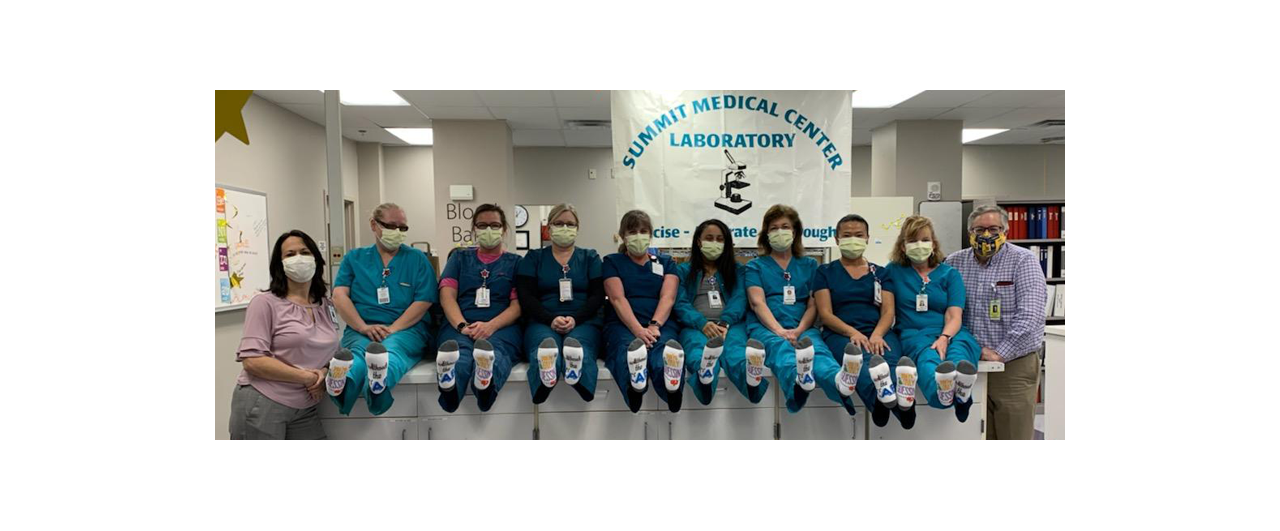The first month of the pandemic was chaotic. In the laboratory, COVID-19 testing protocols changed daily based on national shortages of test kits for COVID-19. It was imperative that test results were returned quickly to conserve personal protective equipment. Reference Labs would promise they could do COVID-19 testing, but they would quickly run out of capacity to perform testing. We, then, would have to change which lab we sent the tests to.
I led our team of 55 staff members anyway I could, mainly by making myself visibly available to support them, whether in our main lab, outpatient lab or free-standing emergency room lab. The hardest part for my team during the initial weeks and months was constant change. For the technical staff, we had to change where we sent tests almost daily. For the phlebotomists, PPE guidelines changed rapidly. To reduce their anxiety as much as possible, I communicated with them constantly to keep everyone informed. We huddled two to three times a day, and I checked in by telephone on the weekends that I did not come in.
I also learned to share with my supervisors and senior leaders when I needed their support. For example, when we were asked to temporarily change testing protocols for two days, I enlisted the COO’s help to communicate the need to continue our current practice until we had a permanent solution in place.
During this trying time, keeping morale high remained a priority to me. National Medical Laboratory Professionals Week fell at the height of the COVID-19 pandemic. This is always a special week for laboratorians, which includes a lot of celebration. This year was certainly different. It was much more subdued; fortunately, I planned ahead and had gifts ready for my team. While many labs postponed Lab Week celebrations, we celebrated as much as we could with lunch being provided by myself, our laboratory medical director and our administrative team.
Just prior to the pandemic hitting, a tornado struck our area on March 3, which left the hospital without power for three days. We then went straight into COVID-19. The tornado was something that we were prepared for because disaster preparedness training and planning is ongoing in the hospital setting. We learned lessons from the tornado such as the need for additional emergency power outlets and the need to train staff on how to communicate to authorities that they are essential personnel who must be able to navigate closed roads. The difference with the tornado, however, is that it was acute, something that we knew the after-effects of would be resolved in a few days or maybe even weeks. The current pandemic on the other hand, is ongoing. We are still making adjustments to testing requirements and PPE. Hospital volumes and staffing are affected, employees may be without childcare. It is nothing like I or anyone here has encountered. Leading through the pandemic requires endurance.
Currently, I am focusing on reduced availability of testing again due to the resurgence that we see. We can now test in-house instead of relying on other labs; however, our allocation for test kits has been reduced for our current platform, and we are validating a different test method. Validating new tests in laboratories is a stringent and arduous process; however, we find ourselves pivoting once again to keep up with the demand and ensure our patients get the care they deserve.
Laura Medley, is director of laboratory services at TriStar Summit Medical Center,Hermitage, Tenn. (laura.medley@hcahealthcare.com)



